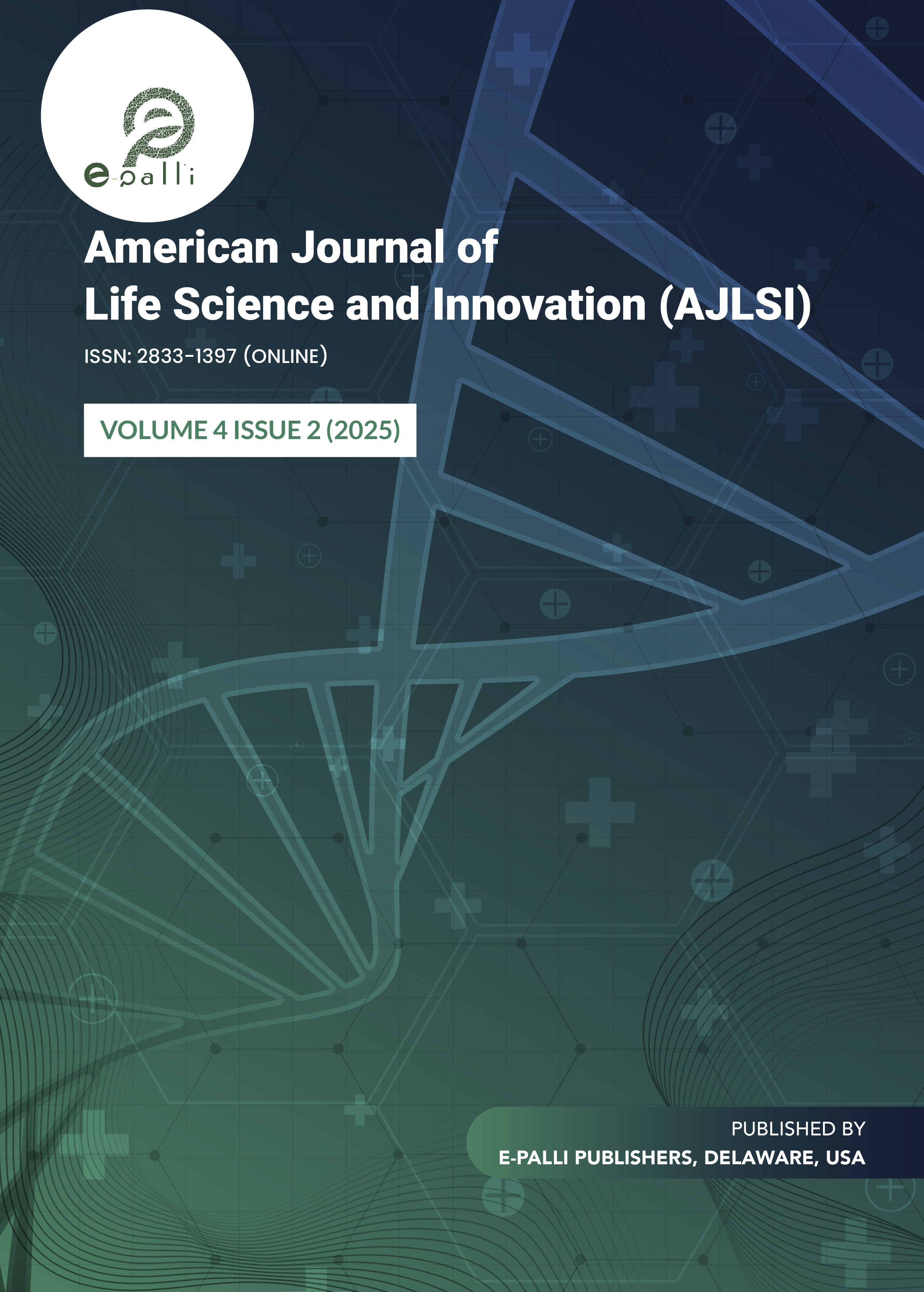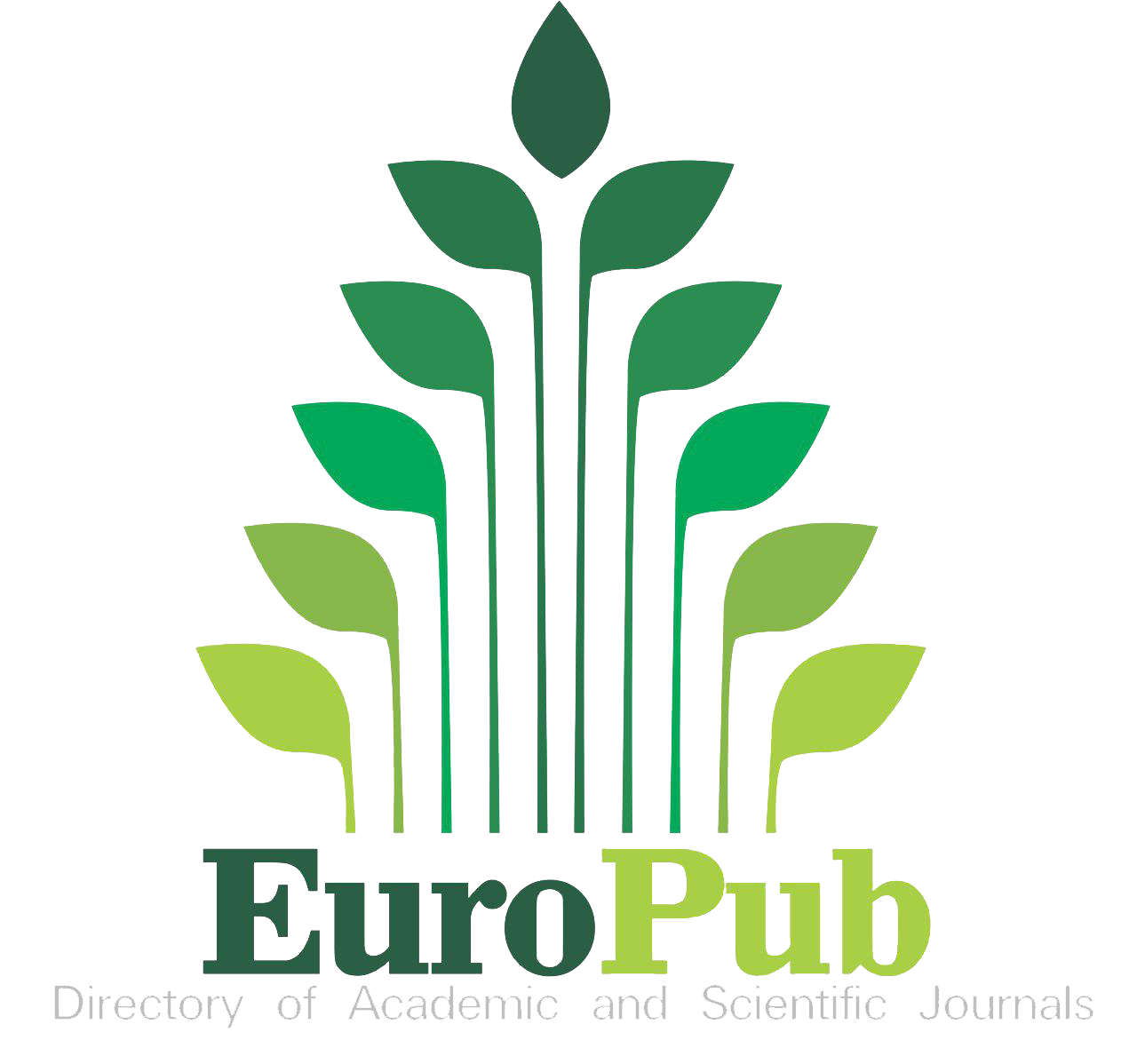In Vitro Antihelmintic Activity of the Hydroethanolic Leaf Extracts of Avicennia marina (White Mangroves) on Eudrilus eugeniae (African Nightcrawlers)
DOI:
https://doi.org/10.54536/ajlsi.v4i2.5048Keywords:
Antihelmintic, Avicennia Marina, Eudrilus Eugeniae, Hydroethanolic Extract, Vermicidal ActivityAbstract
Research is needed to determine the Avicennia marina hydroethanolic leaf extract is effective against adult E. eugeniae, despite research showing that it can eliminate helminths such as Pheretima posthuma. The purpose of this study was to ascertain the hydroethanolic leaf extracts of A. marina antihelmintic effectiveness against adult E. eugeniae in vitro. Using E. eugenie adults (6–8 cm in length and 0.2–0.3 cm in breadth), the percentage vermicidal activity of three concentrations of dried crude hydroethanolic leaf extract of A. marina, 25, 50, and 75 mg/mL of distilled water, was assessed every three hours for 12 hours. Five replicates, three trials, distilled water as a negative control, and mebendazole as a positive control were all examined. According to the findings, the hydroethanolic leaf extracts of A. marina have shown antihelmintic efficacy against E. eugenie adults in vitro at doses of 50 mg/mL and 75 mg/mL utilizing Kruskal-Wallis and LSD on the 3, 6, 9, and 12 hours, with a p-value of less than .05. In both concentrations, 50 and 75mg/ml, until the 12-hour exposure to the extract, there was no discernible difference between them. In vitro antihelmintic activity was best demonstrated at 50 mg/mL for 3 hours (mean = 91.1; sd = 26.6), and the in vitro antihelminthic activity was significantly superior to that of the positive control for the same duration (mean = 2.22; sd = 8.61). The results scientifically demonstrated the antihelmintic efficacy of hydroethanolic leaf extract of A. marina against E. eugeniae and provided the foundation for testing against Ascaris, Trichuris trichiura, and hookworms.
Downloads
References
Akande, A. A., Aboaba, S. A., & Flamini, G. (2018). Constituents and anthelmintic activity Evaluation of Albizia adiantifolia (Schumach) W.F. Wright Essential Oils FromNigeria. International Journal of Chemistry, 10(2), 10. https://doi.org/10.5539/ijc.v10n2p10
Asiimwe, E., Ondari, E. N., Odongo, G. A., & Kimanje, R. K. (2023). Determination of phytochemicals and anthelmintic activity of Rytigynia kigeziensis Verdc extracts using Eudrilus eugeniae model. World Journal of Advanced Research and Reviews, 17(3), 147–156. https://doi.org/10.30574/wjarr.2023.17.3.0320
Bestari, R. S., Ibrahim, M., & Sutrisna, E. M. (2020). The Anthelmintic Activity of Ethanol 96% Extract of Papaya Stem (Carica papaya l.) from Indonesia. International Summit on Science Technology and Humanity, 8-12. https://publikasiilmiah.ums.ac.id/bitstream/handle/11617/12640/iseth%20rochmadina.pdf?sequence=1&isAllowed=y
CDC. (2024). About Soil-transmitted helminths. Soil-Transmitted Helminths. https://www.cdc.gov/sth/about/index.html#:~:text=Soil%2Dtransmitted%20helminths%20are%20among,temperate%20climates%20during%20warmer%20months
D’Addabbo, T., Tava, A., Argentieri, M. P., Biazzi, E., Candido, V., & Avato, P. (2022). Nematicidal Potential of Sulla (Hedysarum coronarium L.) against the Root-Knot Nematode Meloidogyne incognita. Plants, 11(19), 2550–2550. https://doi.org/10.3390/plants11192550
Fissiha, W., & Kinde, M. Z. (2021b). Anthelmintic Resistance and its Mechanism: a review. Infection and Drug Resistance, 14, 5403–5410. https://doi.org/10.2147/idr.s332378
Greiffer, L., Liebau, E., Herrmann, F. C., & Spiegler, V. (2022). Condensed tannins act as anthelmintics by increasing the rigidity of the nematode cuticle. Scientific Reports, 12(1). https://doi.org/10.1038/s41598-022-23566-2
Hogade, M. G., Jalalpure, S. S., Bhinge, S. D., Kuthar, S., & Kosgi, S. S. (2014). In vitro Anthelmintic Activity of Bark of Azadirachta indica against Ascardi galli and Eudrilus eugeniae. Journal of Natural Remedies, 48-51. https://www.researchgate.net/publication/287325302_Invitro_anthelmintic_activity_of_bark_of_Azadirachta_indica_against_Ascardi_galli_and_Eudrilus_eugeniae
Ibrahim, H. A., Abdel-Latif, H. H., & Zaghloul, E. H. (2022). Phytochemical composition of Avicennia marina leaf extract, its antioxidant, antimicrobial potentials and inhibitory properties on Pseudomonas fluorescens biofilm. The Egyptian Journal of Aquatic Research, 48(1), 29–35. https://doi.org/10.1016/j.ejar.2021.10.007
Kancherla, N., Dhakshinamoothi, A., Chitra, K., & Komaram, R. B. (2019). Preliminary Analysis of Phytoconstituents and Evaluation of Anthelminthic Property of Cayratia auriculata (In Vitro). MAEDICA - a Journal of Clinical Medicine, 14(4), 350–356. https://www.ncbi.nlm.nih.gov/pmc/articles/PMC7035446/
Kondepudi, G. M. (2018). Evaluation of In Vitro Anthelmintic Properties of Avicennia marina Leaves. Asian Journal of Pharmaceutical and Clinical Research, 11(4), 303-305. https://journals.innovareacademics.in/index.php/ajpcr/article/view/23605/14380
Kotze, A. C., Hunt, P. W., Skuce, P., von Samson‐Himmelstjerna, G., Martin, R. J., Sager, H., Jürgen K., Hodgkinson, J., Lespine, A., Jex, A. R., Gilleard, J. S., Beech, R. N., Wolstenholme, A. J., Demeler, J., Robertson, A. P., Charvet, C. L., Neveu, C., Kaminsky, R., Rufener, L., … Prichard, R. K. (2014). Recent advances in candidate-gene and whole-genome approaches to the discovery of anthelmintic resistance markers and the description of drug/receptor interactions. International Journal for Parasitology: Drugs and Drug Resistance, 4(3), 164–184. https://doi.org/10.1016/j.ijpddr.2014.07.007
Mationg, M. L., Tallo, V., Williams, G., Gordon, C. A., Clements, A. C. A., McManus, D. P., & Gray, D. J. (2021). The control of soil-transmitted helminthiases in the Philippines: the story continues. Infectious Diseases of Poverty, 10(1). https://doi.org/10.1186/s40249-021-00870-z
Moghal, M. R., Bhattacharjee, A., Seeam, S. M., Islam, M., & Bappy, M. H. (2016). Phytochemical Screening, Cytotoxic and Anthelmintic Activities of Amorphophallus campanulatus (Roxb.), Avicennia marina (Forssk.) and Launaea sarmentosa (Willd.). ResearchGate; Bangladesh Academy of Sciences, 19(1). 106.
Moser, W., Schindler, C., Keiser, J., (2017)Efficacy of recommended drugs against soil-transmitted helminths: systematic review and network meta-analysis. BMJ 358:j4307. doi: 10.1136/bmj.j4307
Ogen, S., Mas’ud, H., Setiawan, K., & Ngakan Made, R. W. (2017). Anthelmintic Activity of Basil Leaves (Ocimum sanctum Linn.) Infusion Against Ascaris suum In Vitro. Journal of Parasite Science, 1(2). https://e-journal.unair.ac.id/JoPS/article/download/16285/8749
Pueblos, K. R. S., Lagare, J. P. B., Tapales, R. V. P. P., & Quimque, M. T. J. (2015). In Vitro Anthelmintic Activity Evaluation of the Aerial Part of Ruellia tuberosa Linn. Against Eudrilus eugeniae. Procedia Chemistry, 16, 570–577. https://doi.org/10.1016/j.proche.2015.12.094
Widaad, A., Zulkipli, I. N., & Petalcorin, M. I. (2022). Anthelmintic Effect of Leucaena leucocephala Extract and Its Active Compound, Mimosine, on Vital Behavioral Activities in Caenorhabditis elegans. Molecules, 27(6), 1875. https://doi.org/10.3390/molecules27061875
Widaad, A., Zulkipli, I. N., & Petalcorin, M. I. (2022). Anthelmintic Effect of Leucaena leucocephala Extract and Its Active Compound, Mimosine, on Vital Behavioral Activities in Caenorhabditis elegans. Molecules, 27(6), 1875. https://doi.org/10.3390/molecules27061875
Wilfred, G., Songoro, E. K., Gathirwa, J. W., Kimani, F., & Kariuki, H. N. (2023). In vivo antiplasmodial activities of stem bark extracts of Avicennia marina in Plasmodium berghei-infected mice. The Pan African Medical Journal, 44. https://doi.org/10.11604/pamj.2023.44.93.38448
World Health Organization (WHO). (2023, January 18). Soil-transmitted helminth infections. https://www.who.int/news-room/fact-sheets/detail/soil-transmitted-helminth-infections
Downloads
Published
How to Cite
Issue
Section
License
Copyright (c) 2025 Malacad, Magallanes, Felizarte, Fenete, Guillermo, Jaspe, Jordan, Legada, Losañes, Marañon, Esteva, Palmos, Barrido, Leong-on

This work is licensed under a Creative Commons Attribution 4.0 International License.







